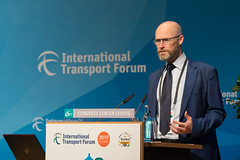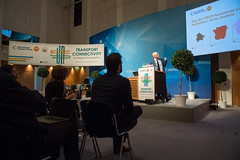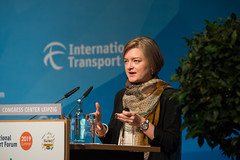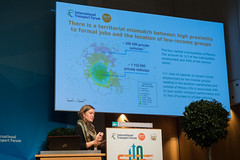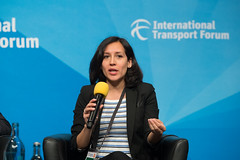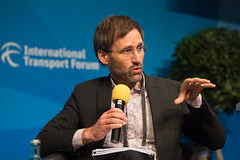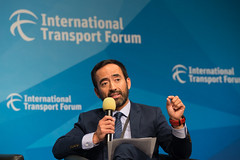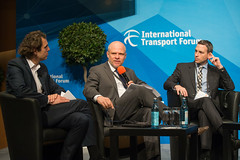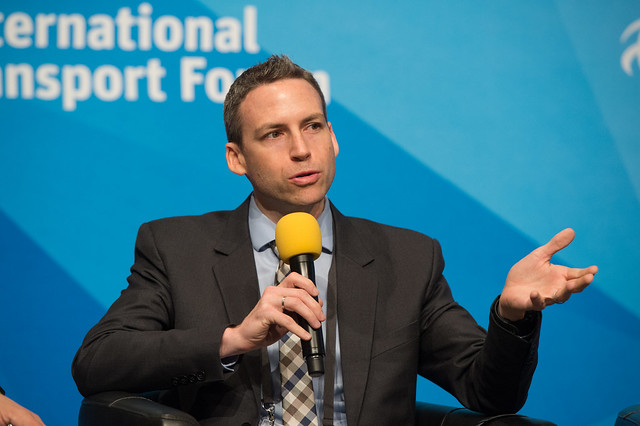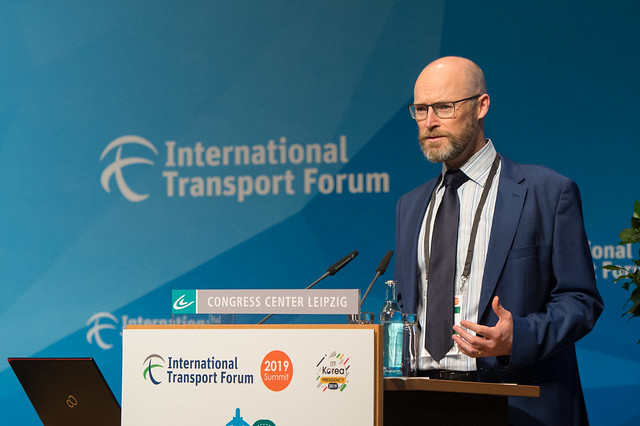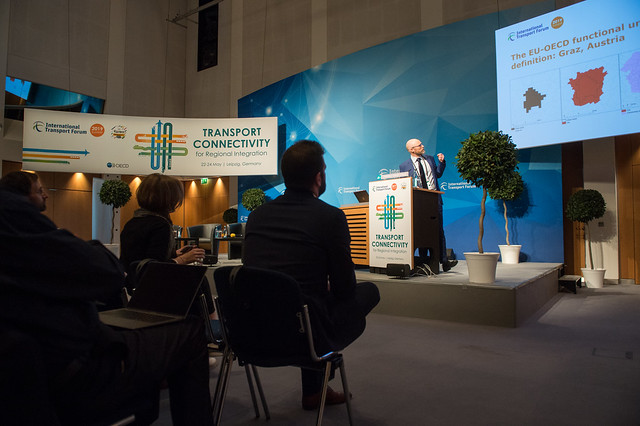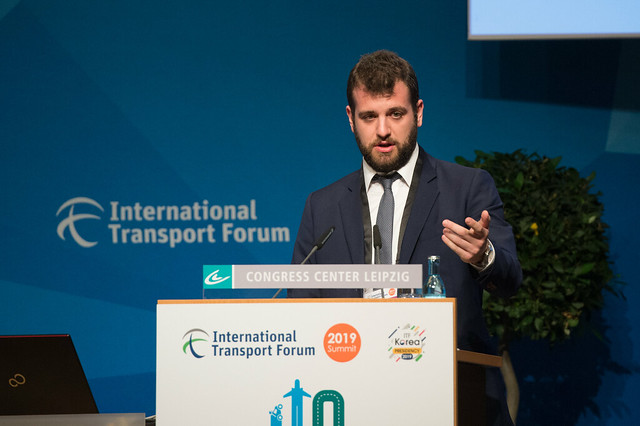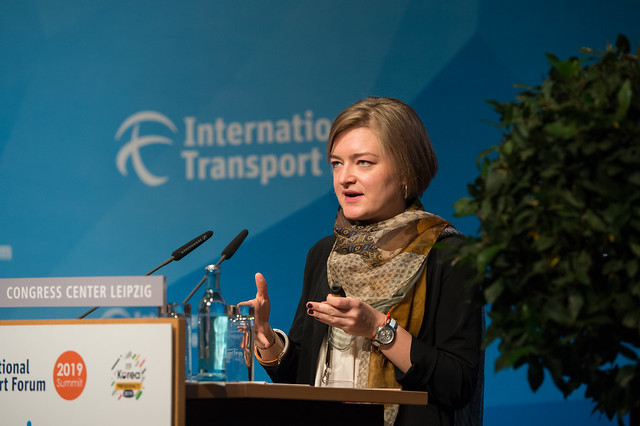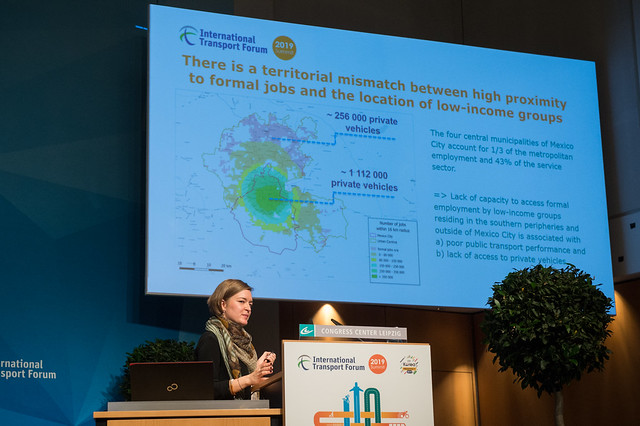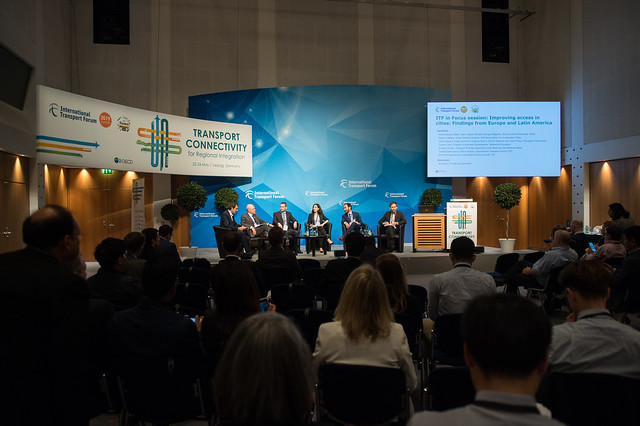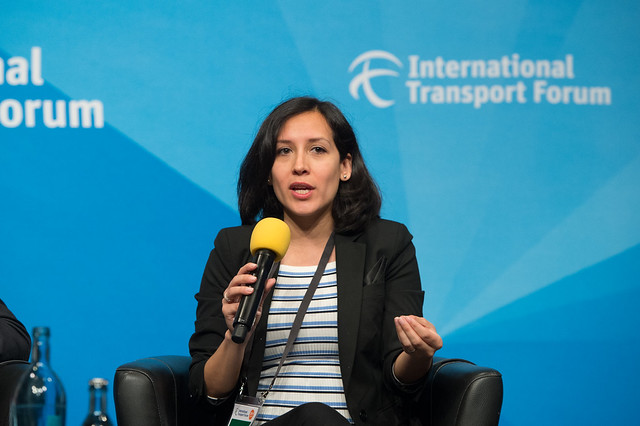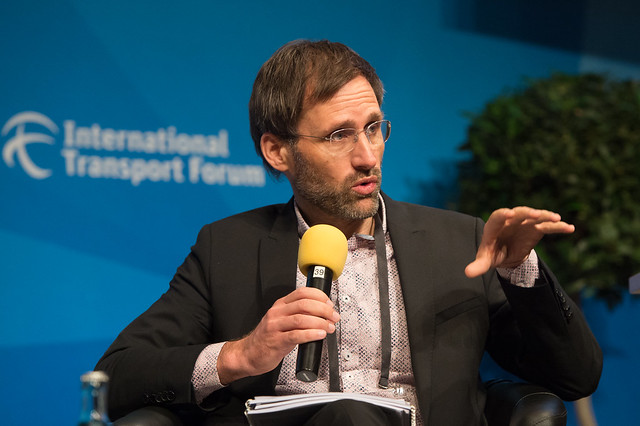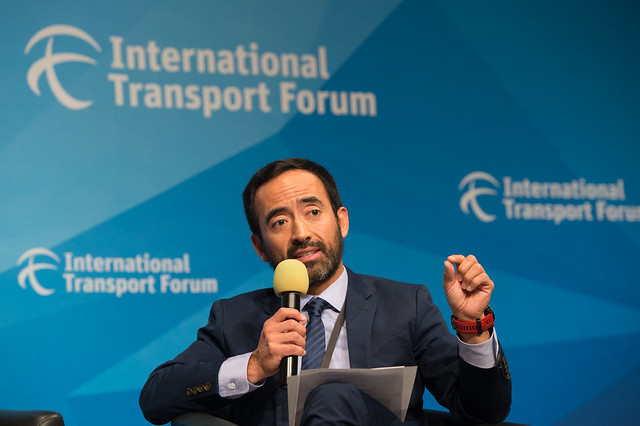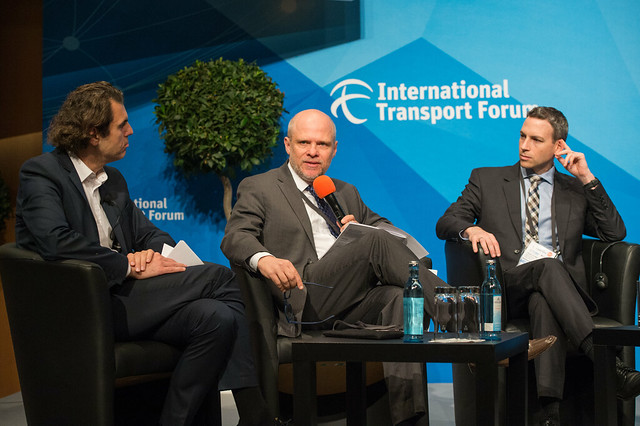Measuring access and providing this information to decision-makers is central to shifting the policy focus from increasing movement to improving access. Clearer metrics and presentational tools could support efforts to put access issues higher on the political agenda, as well as guide decision makers more effectively. The session started with a presentation of the results of a joint ITF, OECD and European Union project to develop a common set of indicators and a benchmarking tool for improving access in European cities, as well as the results of applying the same methodology to Latin American cities. In standard accessibility indicators, city size often heavily influences the results. The ITF-OECD-EU methodology helps to overcome this city size bias and helps reveal the relative importance of the two underlying factors driving access – the performance of transport systems and the structure of land use development.
Lewis Dijkstra noted that cities can continue delivering better transport, but if proximity to opportunities is low, overall accessibility improvements will be marginal. Cities will only effectively improve accessibility by improving both proximity and the performance of transport systems. Ernesto Monter agreed that transport goes beyond building roads and improving the network: it is also about patterns of urban development. Taking into account elements that go beyond infrastructure is the only way to implement projects that address people's needs.
Aimee Aguilar Jaber pointed out that shifting the policy focus to enhancing accessibility (rather than mobility) can better align decisions in the transport sector with well-being and sustainable development goals. This is because focusing on improving effective accessibility (through enhancing physical access to opportunities, ensuring affordable services, and improving road safety) recognises the role of sustainable modes and of creating proximity. This, in turn, can support governments in delivering climate change mitigation, as well as reducing air pollution and its associated health impacts. This is particularly the case in cities where the majority of trips are made by informal transport modes (e.g. poorly regulated micro-buses). Reflecting on the results of the accessibility work in Latin America, panellists agreed that promoting sustainable access should be given priority in transport planning. Informal transport has been filling accessibility gaps in many cities, but these modes are not as safe and not as sustainable as a formal public transport network. Sergio Avelleda concurred that the efficiency of public transport network should be measured not only in km travelled, but in how we are increasing well-being. Accessibility measures are a way to achieve this.
Including informal modes of transport in accessibility analysis is essential, and requires new and alternative data sources. Clayton Lane pointed out that currently, 92% of large cities in developing countries do not have complete public transport maps, with the informal services, which carry up to 80% of ridership typically not being mapped. That means cities are making billion-dollar investments in metros and BRT, without data on up to 80% of their public transport. In Mexico City, WhereIsMyTransport, an innovative open platform listing both formal and informal public transport networks, was able to get 40% more data than previous data gathering exercises. This has significantly improved accessibility analysis by enabling a better understanding of how people travel and more reliable identification of accessibility gaps. However, this approach is yet to become standard practice for urban and transport planning.
According to Philipp Rode, the question of how to apply decades of expertise in measuring accessibility to the overall “accessibility story” remains. Accessibility indicators are used systematically in planning only when researchers, planners and policy makers can readily understand and interpret the meaning behind them. Otherwise, even comprehensive and technically sound tools will not be used in day-to-day practice and will thus have no impact on policy-making.
Overall, the panel agreed that measuring access and communicating the results clearly to policy-makers is key to establishing accessibility as a central criterion for decision-making, which in turn is essential for bridging inequalities and improving well-being. Measuring access can help increase the capacity of authorities to track the effectiveness of transport and urban development policies. It can also help to ensure investment priorities are oriented toward enhancing access to opportunities, especially for vulnerable groups. The technology and analytical tools exist to allow us to address the deep spatial inequities in every city and improve access for all. The challenge lies in ensuring they are fully incorporated in decision-making.
Speakers
Speakers

Lewis Dijkstra
Head of the Economic Analysis Sector at DG for Regional and Urban Policy
European Commission









